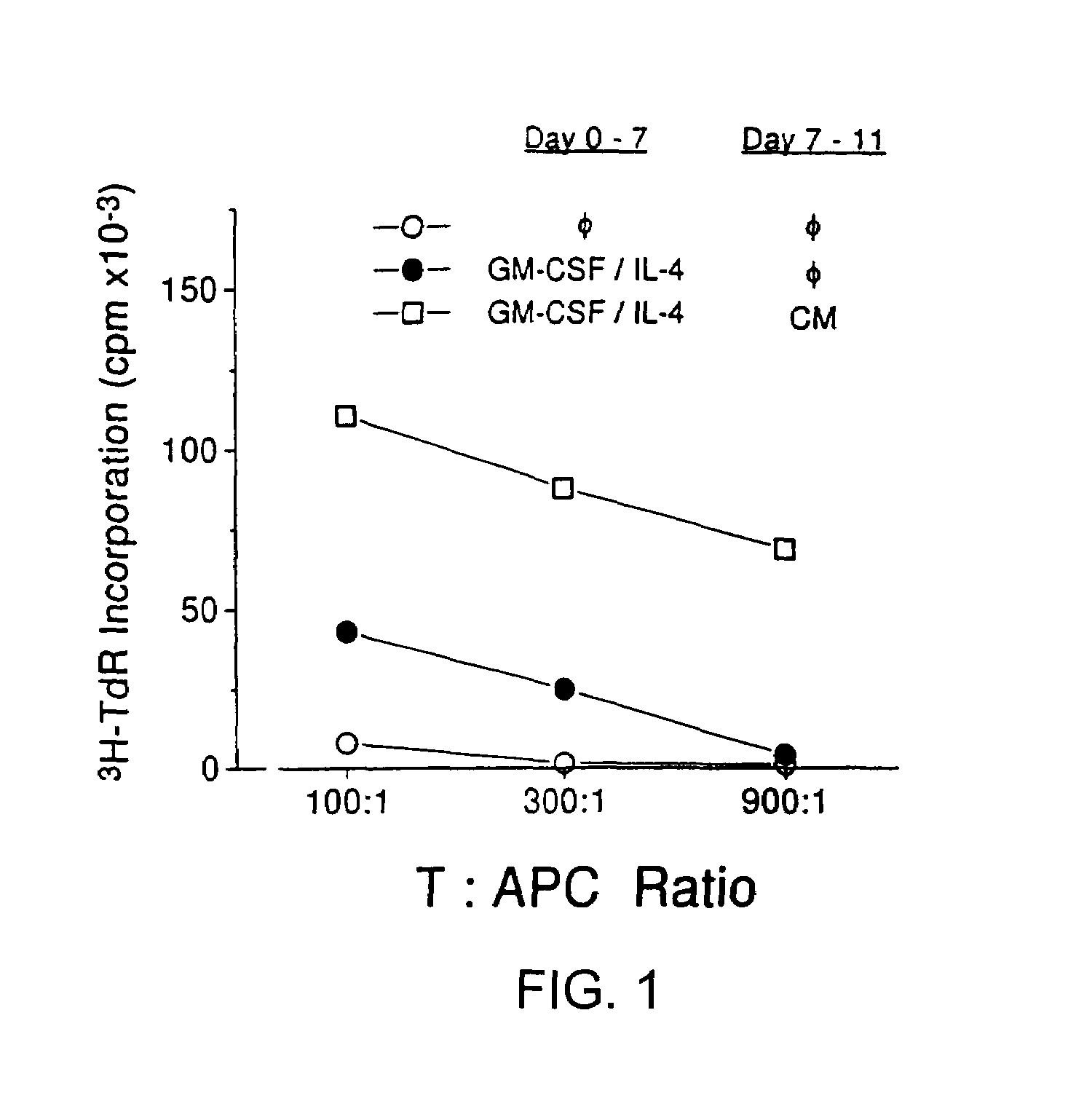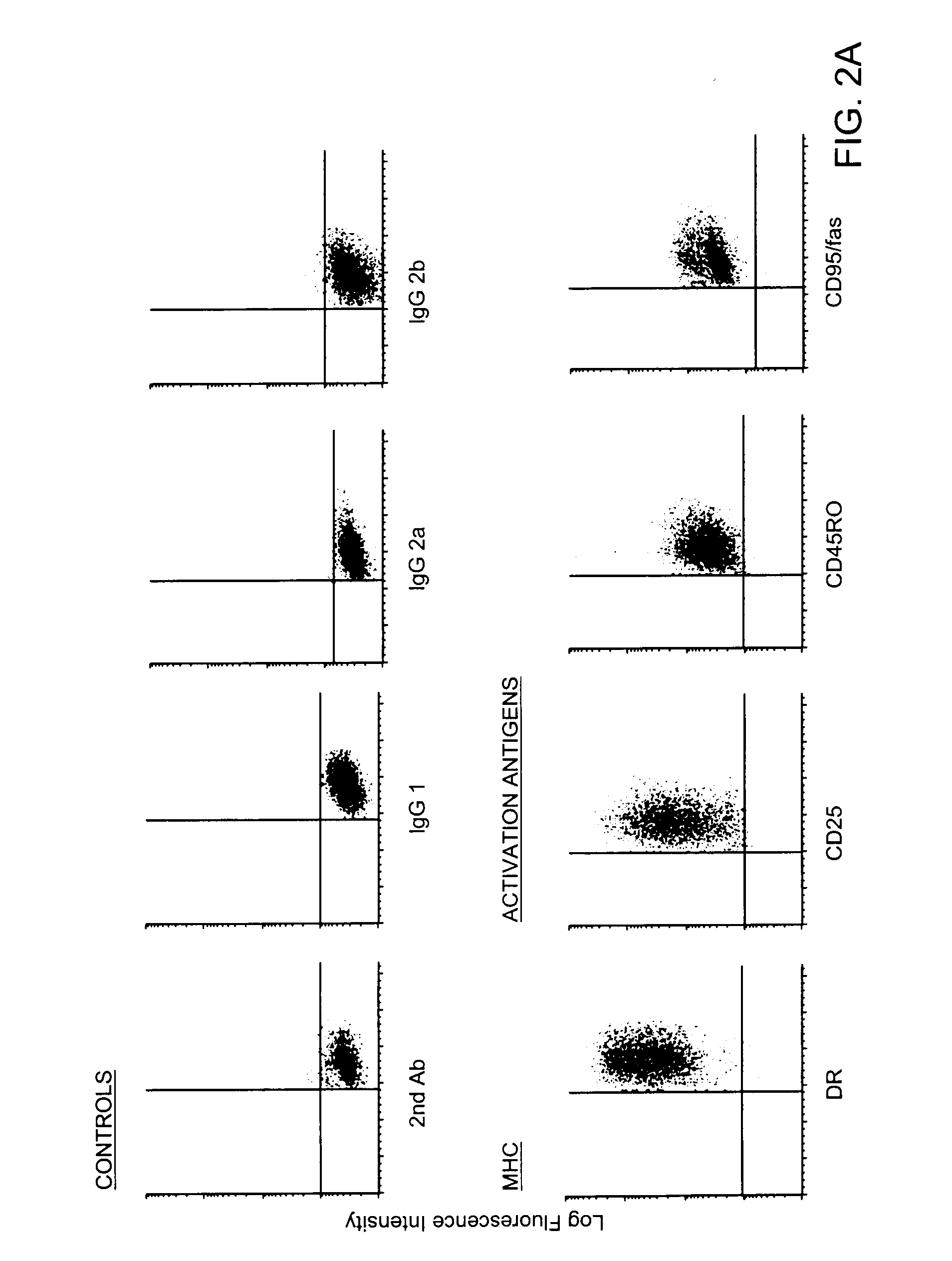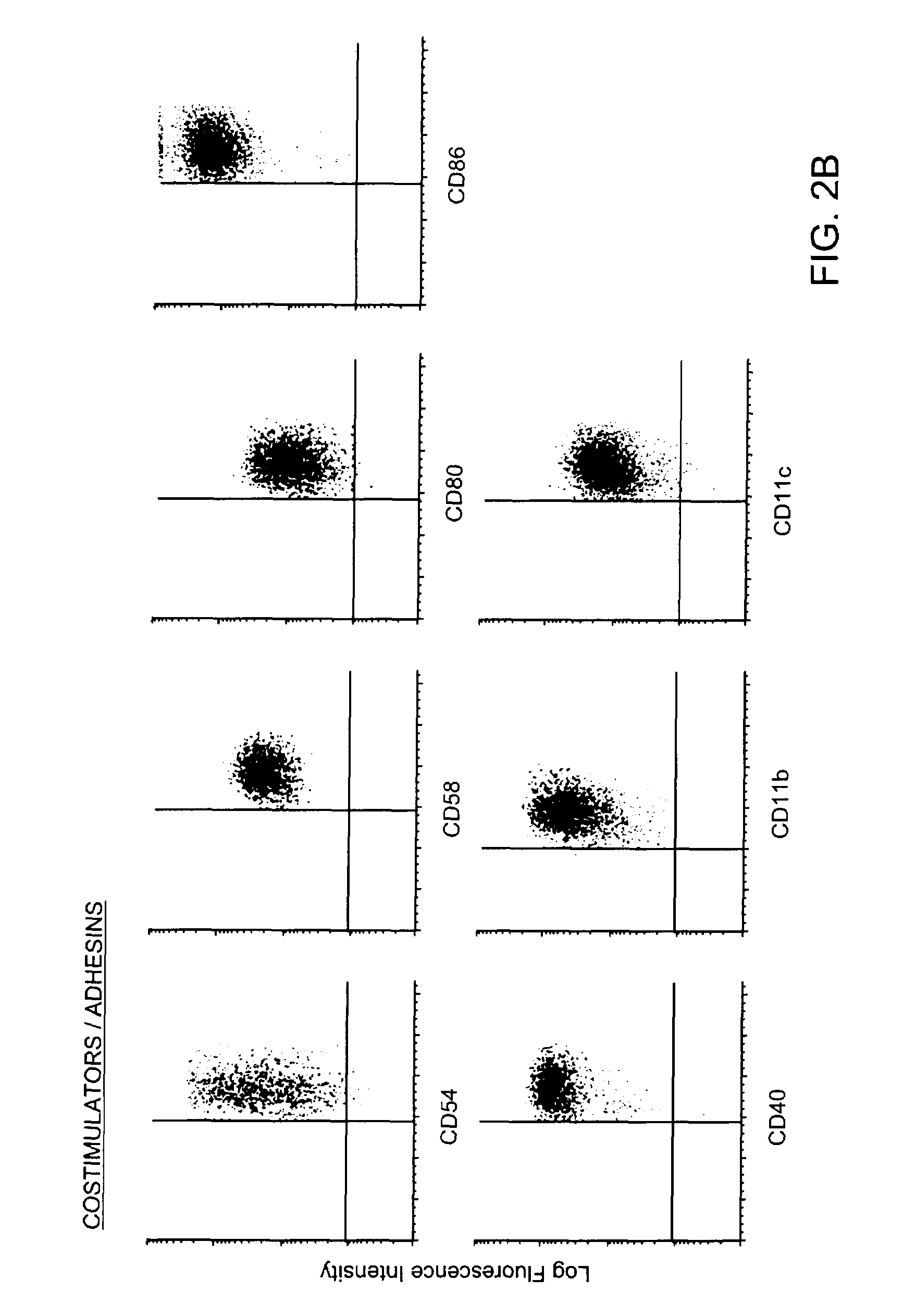Method and compositions for obtaining mature dendritic cells
a dendritic cell and composition technology, applied in the field of methods and compositions for obtaining mature dendritic cells, can solve the problems of ineffective adjuvants, inability to have mature dendritic cells, and inability to have stable dendritic cells, and achieve the effect of promoting the maturation of immature cells
- Summary
- Abstract
- Description
- Claims
- Application Information
AI Technical Summary
Benefits of technology
Problems solved by technology
Method used
Image
Examples
example 1
Methods
Culture Medium
[0074]RPMI 1640 supplemented with 20 μg / ml of gentamicin, 10 mM HEPES, and either 10% heat-inactivated FCS [Gemini Bioproducts, Calabasas, Calif.] or 1% and 10% autologous plasma [heparinized].
Cytokines
[0075]We were generously supplied with rhGM-CSF [1×105 U / μg] by Kirin Brewery Co., Maebashi, Gunma, Japan, and rhIL-4 [0.5×105 U / μg] by Immunex Corp. rhIL-12 [2×107 U / mg] was provided by the Genetics Institute, Boston, Mass. The recombinant human cytokines IL-15, IL-1, IL-6, TNF alpha were purchased from R and D Corp [Minneapolis, Minn.].
Generation of Dendritic Cells from Human Blood
[0076]Peripheral blood was obtained from normal donors in heparinized syringes, and PBMC isolated by sedimentation in Ficoll-Hypaque [Pharmacia Biotech, Uppsala, Sweden]. T cell-enriched [ER+] and T cell-depleted [ER−] populations were prepared by rosetting with neuramimidase treated-sheep red blood cells as described (Carr and Kim, 1993). Different starting populations of PBMC were pl...
example 2
Materials And Methods
Culture Medium
[0125]The following culture media were used: RPMI 1640 [Biological Industries, Kibbutz Beit Haemek Israel]; X-VIVO10, 15, and 20™ [Bio-Whittaker, Walkersville, Md.]; Hybricare and AIM-V™ [GIBCO-BRL, Gaithersburg, Md.]. They were supplemented with 50 g / ml of gentamicin. Sources of serum were FCS [10%, Biological Industries or Seromed-Biochrom, Berlin, Germany], and human plasma and serum [0.5, 1, 5, and 10%] from either adults [PAA Laboratories GmbH, Lin, Austria, blood bank or autologous] or from umbilical cord blood [kindly provided by the Department of Gynecology and Obstetrics]. FSC and, in some experiments only, human sera / plasma was heat-inactivated at 56° C. for 30 minutes.
Cytokines and Anti-Cytokines
[0126]Recombinant human GM-CSF was generously provided by Dr. E. Liehi, Sandoz Ges.m.b.H., Vienna, Austria [specific activity 5.9×106 U / mg]. Alternatively, human GM-CSF prepared for therapeutical purposes was used [Leukomax™, Sandoz, Basel, Switz...
example 3
Clinical Use of Dendritic Cells Primed with Influenza or HIV Antigens
[0153]In this Example, dendritic cells prepared as described in Example 1 are primed with peptides that are presented on MHC class I molecules to prime CD8+ T cells. We have used the immunodominant influenza matrix peptide, GILGFVFTL (SEQ ID NO:1), that is recognized by CTLs from HLA-2.1 individuals, and we will in addition use HIV-1 peptides [pol ILKEPVHOV (SEQ ID NO:2); gag SLYNTVATL (SEQ ID NO:3)] that are recognized by CTLs from HIV-1 infected individuals. The efficacy of the peptide pulse can be monitored by applying an aliquot of the DCs to autologous T cells in culture and measuring the killer cell response.
[0154]Most humans are primed to influenza antigens, so that the recall CTL response to this virus provides an optimal and internal control to determine if autologous DCs, pulsed ex vivo with viral antigens, can boost the CTL response in vivo.
[0155]In this protocol, HIV-1 infected individuals are treated w...
PUM
| Property | Measurement | Unit |
|---|---|---|
| volumes | aaaaa | aaaaa |
| volumes | aaaaa | aaaaa |
| diameter | aaaaa | aaaaa |
Abstract
Description
Claims
Application Information
 Login to View More
Login to View More - R&D
- Intellectual Property
- Life Sciences
- Materials
- Tech Scout
- Unparalleled Data Quality
- Higher Quality Content
- 60% Fewer Hallucinations
Browse by: Latest US Patents, China's latest patents, Technical Efficacy Thesaurus, Application Domain, Technology Topic, Popular Technical Reports.
© 2025 PatSnap. All rights reserved.Legal|Privacy policy|Modern Slavery Act Transparency Statement|Sitemap|About US| Contact US: help@patsnap.com



